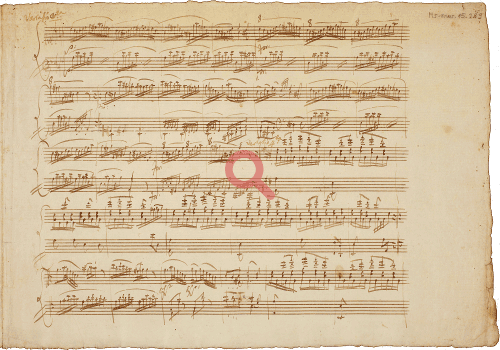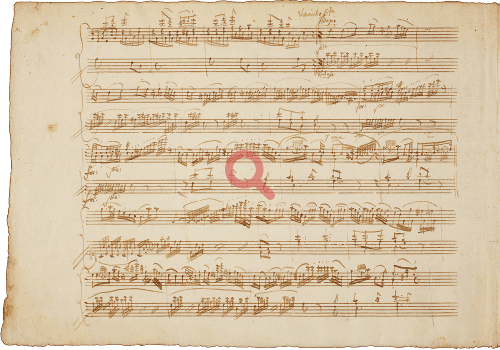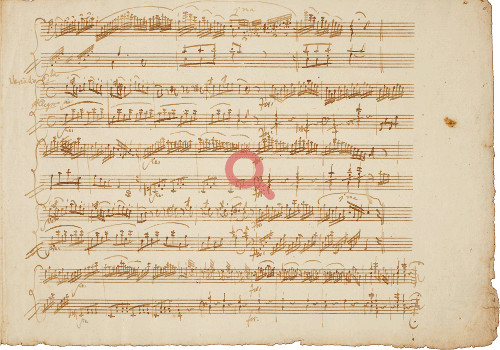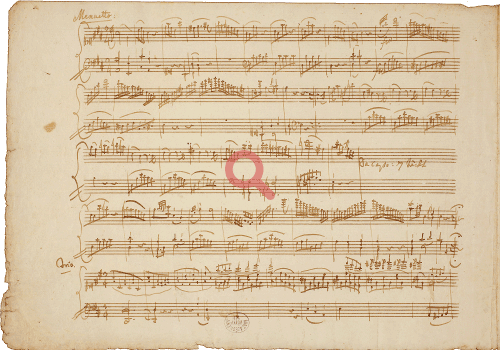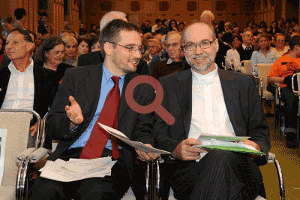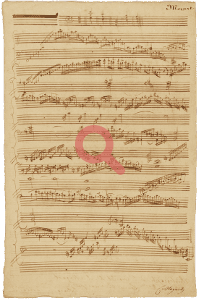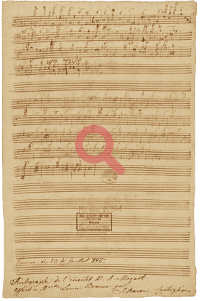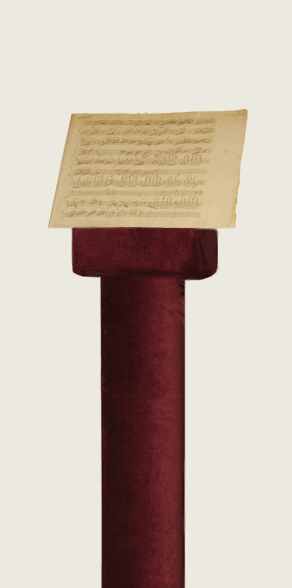
Introduction
In the spring of 2014, an unknown Mozart manuscript was found in National Széchényi Library, Budapest, by Dr. Balázs Mikusi, head of the Music Collection. Since the four-page fragment includes close to half of one of Mozart’s best-known pieces, the Sonata in A major (K. 331, with the ‘Alla Turca’ finale) in the composer’s own handwriting, the discovery attracted extraordinary attention. At the manuscript’s public presentation, held on September 26, 2014 in the packed Ceremonial Hall of the Library, Zoltán Kocsis performed the sonata on a copy of a fortepiano from Mozart’s time, rectifying some errors in earlier editions of the work, but the discovery was in the headlines all over the world several weeks before. Since we received a great number of both private and institutional queries, National Széchényi Library has decided to make a digital copy of this precious manuscript freely available to all, so that music lovers could study Mozart’s handwriting, and practicing musicians and musicologists may compare earlier editions of the A-major Sonata with the original notation of the composer.
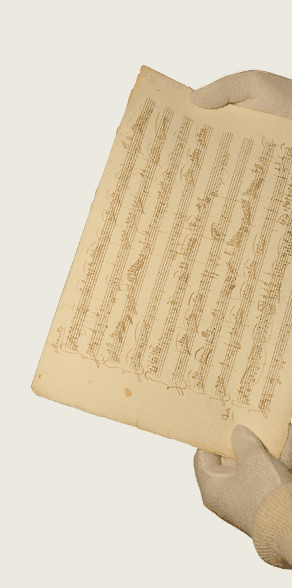
Basic description
Mozart originally notated the Sonata in A major on nine pages of music paper. Until recently, however, only the last one of these had been known to scholars, which includes the end of the ‘Alla Turca’ finale. This fragment is now preserved in the Salzburg Mozarteum, as part of the collection of the Bibliotheca Mozartiana.
Mozart wrote the first eight pages of the manuscript on two pairs of leaves (so-called bifolios) nested in each other: the two pages of the left-hand leaf of the first bifolio included the first two pages of the sonata, this was followed by the ‘nested’ second bifolio including pages 3 to 6; finally came the right-hand leaf of the first bifolio with pages 7 and 8 on its two sides. (Here Mozart obviously ran out of space, and therefore wrote the final measures of the finale on the extra leaf now located in Salzburg.)
The source recently discovered in the Music Collection of National Széchényi Library is the inner one of the two bifolios, which includes the greater part of the first movement (from Variation 3 to the end), the entire Menuetto, and the first ten measures of the ensuing Trio section. Nonetheless, the whereabouts of the first two pages of the opening movement (with the theme and its first two variations) and pages 7–8 (including the end of the Trio and the beginning of the ‘Alla Turca’ finale) are still unknown – one can only hope that this ‘outer’ bifolio might also emerge from some other collection sooner or later.
For researchers, it is also of some relevance that the paper type of the Budapest bifolio is identical to that of the Salzburg fragment (so-called ‘Tyson no. 67’ watermark). Following its identification, the manuscript received the shelf mark Ms. mus. 15.289 in the Music Collection.
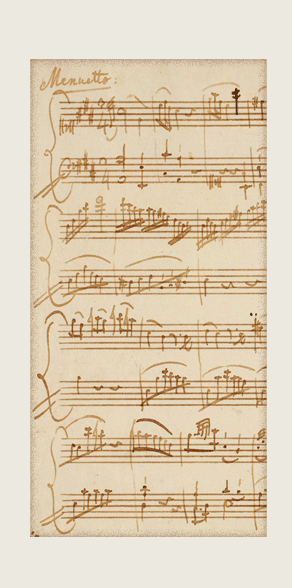
Musical significance
Mozart’s Sonata in A major (K. 331) was published in Vienna by Artaria in early 1784 together with two other keyboard sonatas (C major, K. 330, and F major, K. 332), and the consensus of scholars is that the three works were written not much earlier, in 1783. Since Mozart was certainly involved in the preparations of Artaria’s first edition, if the printed version at certain points diverges from the newly found autograph, this could in part reflect the composer’s intentions – the rich dynamic markings in the first phrase of the Menuetto (which are as good as absent from the manuscript) were likely supplied by Mozart subsequently.
In other instances, nonetheless, the autograph may call attention to plain mistakes, which crept into the first edition due to a lapse of attention on the part of the printer. On page 2 of the newly discovered manuscript, for example, at the end of the third staff and the end of the first measure in the fifth staff (these are measures 5–6 in the right hand of the opening movement’s fifth variation) the rhythm of the last three notes are two 64ths and a 32nd – in the Artaria edition, however, a beam was erroneously dropped, as if one had to play two 32nds and a 16th. Given that this way the measure would be too long, later editors of the sonata ‘corrected’ the three-note group to three equal 32nds, and today the passage is played like this by every pianist – even though the little ‘snap’ originally written by Mozart himself is much more interesting.
But the most intriguing differences occur on the last page of the newly discovered manuscript, in the Menuetto. At the end of the third measure, for instance, all modern editions suggest c#’’’, even though in Mozart’s manuscript (the right hand of which is notated in soprano clef!) there clearly is an a’’ here, which is more convincing also with regard to the melodic logic. This mistake derives from the textual corruption of the first edition, in which measure 3 had the (correct) a’’, but the recapitulation of the same passage in measure 33 ended with c#’’’ – it was this discrepancy that later editors sought to remedy by changing the a’’ in measure 3 to c#’’’ as well, in accordance with measure 33. (Since Mozart did not write out the recapitulation of the theme separately, but rather entered the remark Da Capo: 7 Täckt, the incorrectness of the c#’’’ is beyond doubt.)
Finally, it is worth mentioning that Mozart’s autograph confirms the reading of measures 24–26 in the first edition, which has consistently been overruled by modern editors of the sonata. As one can see on the last page of the Budapest manuscript, at the beginning of the fifth staff (measure 23 of the Menuetto) the right hand indeed has the natural signs, but the following three measures are notated in A major – furthermore, in measure 26 a # sign was added retrospectively before the first note of the right hand, as if Mozart had wanted to alert the performer that s/he should again turn toward A minor (by playing c’’) only in the next measure.
Besides these major differences, however, careful comparison with the first edition uncovers a number of smaller differences (e.g. with respect to slurring), studying which can help every performer work out his/her own variant.
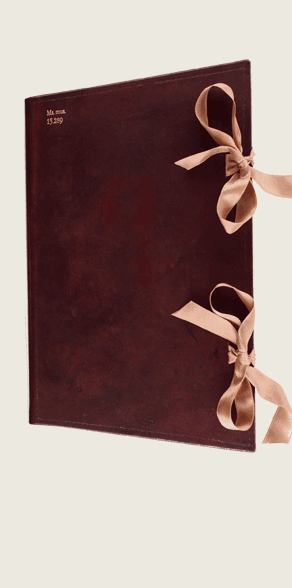
The discovery
The newly discovered autograph fragment of Mozart’s Sonata in A major (K. 331) includes the second part of the opening movement, the Menuetto, and the beginning of the latter’s Trio section, therefore the manuscript bears neither a title nor the composer’s name. Due to this lack of explicit inscriptions, the autograph was put aside during its earlier processing in the library, since for cataloging, precisely these two bits of information should have been necessary. Thus, the manuscript was put into a folder dedicated to unidentified fragments, the repeated review of which eventually allowed for its identification on the basis of the music and the handwriting.
While the placement into the folder for fragments ensured the preservation of the source, it also makes it extremely difficult to trace its earlier provenance. At this point, it cannot be cleared up exactly when, and as part of which collection, Mozart’s autograph came into the national library – whereas the four pages of music contain no inscription, either, that would shed light on the history of the manuscript. In any case, the fact that the autograph came to light from the collection of National Széchényi Library definitely suggests that it documents a Hungarian connection of the composer: out of the numerous Hungarian aristocrats, who attended Mozart’s Viennese subscription concerts, or invited him for private performances, one may have acquired the four-page autograph as a personal souvenir, and later on the precious manuscript probably came to the national library from the family’s collection.
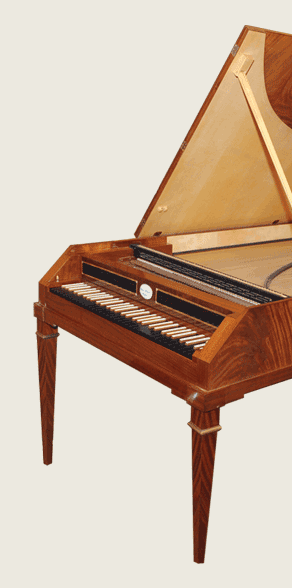
Public presentation
The manuscript was first presented to the public on September 26, 2014, as part of the ‘Night of Researchers’ program of National Széchényi Library. On this occasion, Ulrich Leisinger, Director of Research of the Mozarteum Foundation Salzburg was invited to briefly introduce the audience to Mozart source studies, with special reference to the Salzburg leaf of the Sonata’s autograph, and Balázs Mikusi, Head of the Music Collection of National Széchényi Library, presented the four pages newly discovered by him. In conclusion, pianist Zoltán Kocsis, General Music Director of the Hungarian National Philharmonic, discussed the musical significance of the manuscript and performed the entire sonata on a copy of a fortepiano from Mozart’s time.
Our other Mozart autograph
Besides the newly identified manuscript, the Music Collection of National Széchényi Library owns another Mozart autograph, which was purchased in May 1977 from Imre Sulyok. Before selling it, Sulyok published the single-leaf manuscript in a facsimile edition: W. A. Mozart: Praeludium (ohne Köchel-Nummer). Faksimile-Ausgabe. Erstdurck. Hrsg. Imre Sulyok. Budapest: Editio Musica, 1977. Understandably, however, this edition provides neither the shelf mark the source later received in the national library (Ms. mus. 6.341), nor its subsequently coined Köchel number (K. 269c).
The manuscript was originally owned by Mozart’s sister, Nannerl, and its history can be reconstructed in some detail. At the bottom of the fully written side of the leaf, one sees the signature of the composer’s son, Carl Mozart. From him the manuscript apparently came in the hands of Josepha Baroni Castiglione, since at the bottom of the other side of the leaf (which includes figured bass exercises in Nannerl’s hand) there is a remark, according to which the autograph of ‘the immortal Mozart’ was presented by Josepha Baroni Castiglione to Luigia Branca on July 23, 1846:
Vienne le 23 de Juillet 846.Autographe de l’immortel W. A. Mozart.
Offèrt à Mselle Louise Branca par J. Baroni Castiglione
Subsequently, the manuscript was for a while in the possession of the niece of Luigia Branca’s husband, Melánia Fuchs, and eventually came from the estate of her husband, Vilmos Schulek, in the hands of their grandson, Imre Sulyok.
In the decades that have passed since the publication of the facsimile edition, it has also been clarified that this folio was originally part of a bifolio, the rest of which has also survived: the manuscript K. Anh. C 15.11 is today kept in the Krakow Biblioteka Jagellonska, bound in a collection under shelf mark autogr Moz 624/5 Kadenzen. Both the characteristics of the handwriting and the type of the paper suggest that Mozart wrote this modulating prelude in 1776–1777, for his sister Nannerl. (The bass clef and the six chords, all in black pencil, above the prelude were presumably notated by Mozart’s father, Leopold.)

Imprint
Content service entitled Mozart, K. 331 (Sonata in A major) presents the original manuscript fragment of one of Mozart’s most popular sonatas to be found in the collection of National Széchényi Library. The manuscript fragment was identified by Dr. Balázs Mikusi, head of NSZL’s Music Collection in 2014. The manuscript’s public presentation was held on September 26, 2014 in the Ceremonial Hall of the Library.
This content service was launched in 2015, with the cooperation of NSZL’s Music Collection and its Department of Web Content Coordination.
Design of the content service was created with the use of details from the recently discovered Mozart manuscript and its various views and full-leather folder, as well as Mozart’s signature and silhouette, and a photograph made of the copy of a period fortepiano.
Editor-in-Chief:Dr. Balázs Mikusi, Head of Department, Music Collection
Editors:
Gábor Gondos (Department of Web Content Coordination)
Jolán Mann (Department of Web Content Coordination)
Annamária Sudár (Department of Web Content Coordination)
Design and graphics:
Csilla Kálóczi (Department of Web Content Coordination)
Copy editor:
Katalin Zimányi (Department of Web Content Coordination)
Website builder:
Csaba Tímár (Department of Web Content Coordination)
Contributors:
Ádám Ackermann (Department of Stock Preservation Digitizing)
Emőke Baranyai (Restoration and Bindery Department)
Pál Horváth (Restoration and Bindery Department)
Lajos Karasz (Department of Stock Preservation Digitizing)
Ilona Sághi (Department of International and Cultural Relations)
Péter Tóth (Department of Web Content Coordination)
Creators of this service wish to express their special thanks to
Dr. Ulrich Leisinger, Director of Research at the International Mozarteum Foundation in Salzburg
Zoltán Kocsis, pianist and General Musical Director of the Hungarian National Philharmonic and to
György Vashegyi, founder and leader of Orfeo Orchestra and Purcell Choir
Please, share your opinion and remarks with us at the following e-mail address: honlap@oszk.hu
Publisher in charge:
Dr. László Tüske, Director-General
National Széchényi Library – Buda Castle, Building “F”, H-1827 Budapest
©2015 – National Széchényi Library





